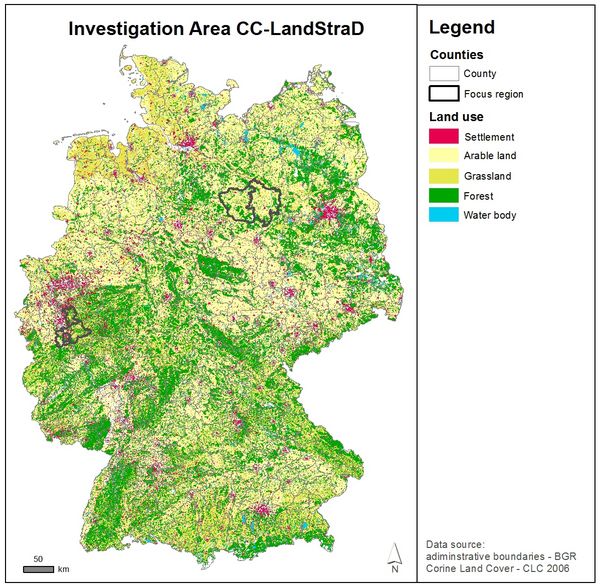Joint project - background
The joint project CC-LandStraD investigates land use and land use changes in Germany.
Germany is in a temperate climate zone and, based on its land area of 357,000 km² and approximately 82 million inhabitants, is one of the most highly populated countries in the world. In light of the scarce amount of land area available, the land is intensively used for diverse social demands.
The chart shows the most important of land uses in Germany in 2006.
In 2009 52 % of land was used by agriculture and 30 % by forestry. But land use for settlement and transport infrastructure, as well as for recreational purposes, is of high priority. These purposes currently comprise approximately 14 % of land use. The use of land for settlement and transport determine significantly the amount of land that is available for the production of food and feedstuffs or wood. Farming should also harmonize, as far as possible, with environmental and natural protection concerns to ensure that different ecological system services are fulfilled.
In the past years, the expectations for the contributions of land use to climate protection increased. For example, the management of carbon pools and other greenhouse gases found in soil and vegetation can be fostered with appropriate land management. A further possibility is to create energy from biomass as an alternative to the combustion of fossile fuels. The potential of land management to contribute to climate protection is determined by complex, not yet clarified, interactions between the land use changes and the bio-geosphere.
The collaborative research project CC-LandStraD shall elaborate answers to the following research questions:
- What can land use in Germany contribute to mitigate climate change in the face of changes of framework conditions?
- Which inter-sectoral land use strategies can be applied regionally to achieve the climate protection goals?
- How can a balance be achieved between various demands on land use?


